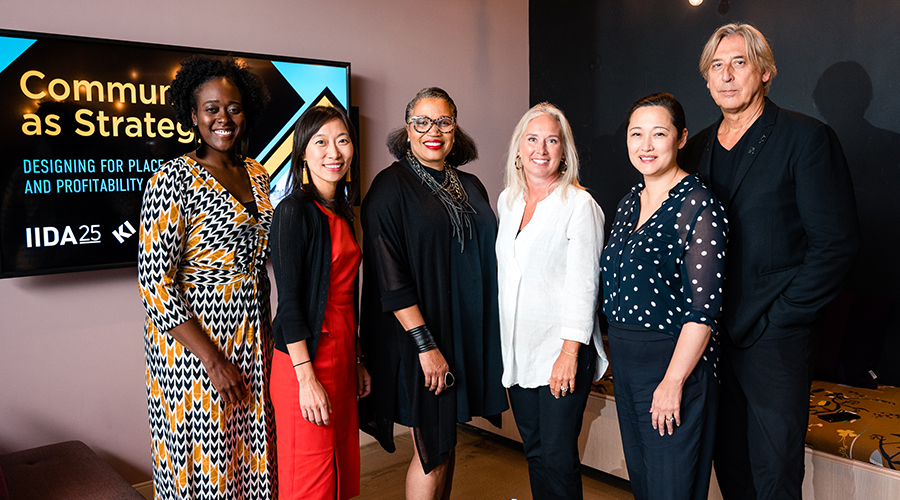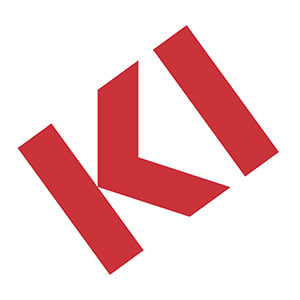- Angie Lee - Partner, Design Director-Interiors, FXCollaborative
- Annie Lee - Principal, Interior design, ENV
- Amy Mays - Interior Design Practice Leader, HDR
- Jon Otis - Founder, Principal, Object Agency (OIA) and Professor at Pratt Institute
- Genia A. Wright - Chief Operating Officer and Financial Officer at the Vera Institute of Justice.

One topic that surfaced, which we've alluded to with the farmers market tale, is the relationship between health and wellness, community and design.
Panelists noted that healthcare providers are facing higher costs and changing consumer preferences, leading them to look at new and innovative ways to provide care. That includes incorporating community as they plan and design facilities that create an inviting experience for patients while also supporting holistic well-being.
Many patients struggle to physically get to their providers which has spurred the building of outpatient clinics closer to, and within neighborhoods. Consumer preferences are having a huge impact. Healthcare facilities are being designed to look and feel more like a “spa” or retail experience than your typical sterile, “big box” hospital.
Panelist Amy Mays experienced these changes first hand as she worked with Kaiser Permanente to design facilities so as to answer the question of “how do we deliver healthcare differently?”
Mays and Kaiser Permanente created reception areas reimagined as public squares where patients are encouraged to move around the space and connect with staff and other patients as they wait. Some buildings offer community rooms with yoga, cooking classes and region-specific programming. Others include gardens and walking trails. Each is unique and tailored to fit the needs of the area its serving.
“It’s allowing people to come to the facility and do the things they would typically do in their community instead of thinking of Kaiser as a provider. It was taking an outpatient facility, breaking it down and creating community around it,” said Mays.
Kaiser Permanente also examined the location of clinics, eventually developing a set of guidelines for selecting real-estate that integrates clinics within specific neighborhoods.
“Did it make sense to have a piece of property across the highway when you needed it next to the school because they were committing to the community and having after school programs?” Mays said.
Mays is also involved in a plan for Chicago that takes the idea of connecting community with healthcare providers a step further –building an entire community around health and wellness.
The Focal Point Community Campus envisions a mixed-use development with affordable housing, childcare, retail, arts, recreation, vocational education and wellness in a connected campus. The 33-acre site will be anchored around a rebuilt St. Anthony Hospital, intrinsically linking it with the community. The goal is to improve access to care and healthcare information while improving the well-being of residents.
“It’s not just a healthcare facility, in the end it will be a self-sufficient community.” Mays said.
KI has been involved in similar projects, including Bellin Health’s Titletown Sports Medicine & Orthopedics in Green Bay. The facility is in the heart of the Titletown district, an emerging hub of housing, lodging, community events, entertainment, and yes, football. It ties healthcare with a vibrant community setting and one of the most recognizable organizations in Wisconsin – the Green Bay Packers. <View case study>
As we’ve heard at all of our panel events, human connection is ingrained deep in our nature and it is becoming a key design driver and practice among the design community, manufacturers and end users. Regardless of industry, people thrive on interaction with one another and designers are intentionally planning spaces and places to accommodate this desire.
The Community as Strategy series continues in Boston on Sept. 17 before wrapping up in San Francisco in October. At the end of the tour we’ll compile our findings in an executive summary highlighting key takeaways from across the country.
You can follow the Community as Strategy discussion on social media using the hashtags #ispyki, #kifurniture, #iidaiseverywhere and #iida_hq.
Click to learn more about our other events in St. Louis, Chicago and Washington, D.C.




